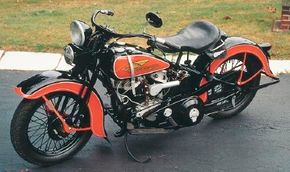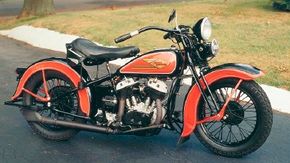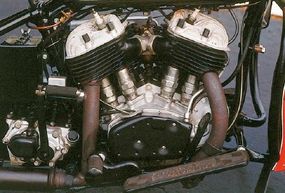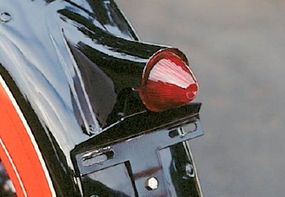The 1934 Harley-Davidson VLD motorcycle was a bold new design for one of the few motorcycle companies not ruined by the stock market crash of 1929.
Harley's traditional Olive Green paint -- which had been used with little variation since 1917 -- was dropped as the standard color after 1932. It was replaced by more vibrant two-tones such as the black and Orlando Orange of our featured machine. Green, however, remained available for traditionalists.
Advertisement
Flathead V-twins, which had replaced F-head versions in the late 1920s, came in 45- and "Big Twin" 74-cubic-inch versions.
These were landmark engines; the 45 would continue to power three-wheeled Servi-Cars into the Seventies, and the Big Twin would form the basis for the famous EL overhead-valve "Knucklehead" of 1936.
Triggered by a stock-market crash on October 29, 1929, the Great Depression killed off all the major U.S. motorcycle manufacturers save for Harley-Davidson and Indian. And despite decreased competition, even those makes teetered on the brink of extinction.
But Harley had a strong dealer network and the right products at the right time, and things were beginning to look up by 1934.
Harley's two-place Buddy Seat with sprung seatpost arrived in 1933, quickly becoming one of the company's most popular accessories. Previously, passengers rode on a separate seat, usually mounted to the luggage rack.
For more pictures of the 1934 Harley-Davidson VLD motorcycle, go to the next page.
For more great motorcycle articles and pictures, check out:
- Classic Motorcycles
- How Motorcycles Work
- Harley-Davidson Motorcycles
Advertisement



